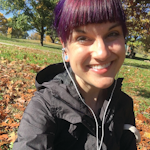Important note: The material discussed in this article relates to drug abuse and the United States opioid epidemic. Please take care of yourself accordingly.
“Opioid overdoses accounted for more than 42,000 deaths in 2016, more than any previous year on record.”1 In 2016, both federal and state governmental agencies recommended prescription monitoring programs for dental professionals as a strategy for curbing patient dependence on opioid analgesics. Still, the opioid epidemic has been a lasting public health emergency that was amplified by the COVID-19 pandemic. “Among the unrelenting death statistics flowing from the CDC last month, one grim non-COVID-19 statistic stood out: 81,003 deaths. That’s the number of people who died from drug overdoses in the 12-month period ending last June: a 20% increase and the highest number of fatal overdoses ever recorded in the U.S. in a single year.”2
As professionals who serve the general population, dental hygienists need to become familiar with the mode of action and safe use of Narcan. Additionally, a commitment to reducing the rate of opioid-induced deaths should remain a priority for all health professionals.
What is Narcan?
The Department of Health and Human services noted that it “is working to better target the availability of lifesaving overdose-reversing drugs. In 2019, the President’s Budget included $74 million in new investments to support this priority. Increased access to overdose-reversing drugs can promote quick and effective response to opioid overdoses.”3 One such overdose-reversing drug is naloxone (better known as Narcan).
Starting in 2016, both state and local organizations began to offer training on the use of Narcan, a life-saving nasal spray that temporarily and rapidly reverses an opioid overdose. Initially, priority for Narcan training was given to health-care providers and those encountering people experiencing addiction in daily life. Now, many states offer Narcan training to laypeople, and good Samaritan laws are being implemented to protect those arriving at the scene of an overdose who attempt to revive someone with Narcan.
In general, many states are trending toward creating opportunities for the public to revive those experiencing an overdose without negative consequence. It is important to research the specific regulations governing your state and to find out whether a prescription to carry Narcan is required. “Depending on the state you live in, friends, family members, and others in the community may give the auto-injector and nasal spray formulation of naloxone to someone who has overdosed. Some states require a physician to prescribe naloxone; in other states, pharmacies may distribute naloxone in an outpatient setting without bringing in a prescription from a physician. To learn about the laws regarding naloxone in your state, see the Prescription Drug Abuse Policy System website.”4
How does Narcan work?
Narcan is offered as a nasal spray that “binds to opioid receptors and can reverse and block the effects of other opioids. It can very quickly restore normal respiration to a person whose breathing has slowed or stopped because of overdosing with heroin or prescription opioid pain medications.”3 The effects of Naloxone last from 30 to 90 minutes, so it is important to stay at the scene of the overdose and to encourage the individual to seek medical care immediately.
The specific steps to take when reviving someone (and the protocol for administering a second dose of Naloxone) are covered during a formal training and are beyond the scope of this article. Narcan makes it possible for people experiencing an overdose to access life-saving emergency care, thus reducing the number of deaths that result because of the opioid epidemic.
Next steps
The opioid epidemic remains a pervasive public health emergency in the United States, and it has only been amplified by the COVID-19 pandemic. It is critical for dental hygienists to understand the method of action and safe administration of Naloxone nasal spray and, moreover, to be prepared to deliver it when encountering those experiencing an overdose. An appropriate next step is to contact your local health department and obtain information regarding the legal administration of Narcan and available trainings. Like CPR training, Narcan administration is a skill that can save lives and reduce the mortality rate among the general population.
References
- What is the US opioid epidemic? US Department of Health and Human Services. Reviewed February 19, 2021. https://www.hhs.gov/opioids/about-the-epidemic/index.html
- McFarling UL. As the pandemic ushered in isolation and financial hardship, overdose deaths reached new heights. STAT. https://www.statnews.com/2021/02/16/as-pandemic-ushered-in-isolation-financial-hardship-overdose-deaths-reached-new-heights/
- Opioid overdose reversal with naloxone (Narcan, Evzio). National Institute on Drug Abuse. https://www.drugabuse.gov/drug-topics/opioids/opioid-overdose-reversal-naloxone-narcan-evzio
- State naloxone access laws. Education Development Center. State Naloxone Access Laws. https://preventionsolutions.edc.org/services/resources/state-naloxone-access-laws
Lauren Hapeman, BSDH, RDH, PHDHP, is a practicing dental hygienist in Richmond, Virginia. She is currently pursuing a master of science degree in dental hygiene through the University of Bridgeport. Her passions include promoting diversity, equity, and inclusion within the profession; periodontal therapy; and public health. She welcomes your feedback and may be reached at [email protected].







